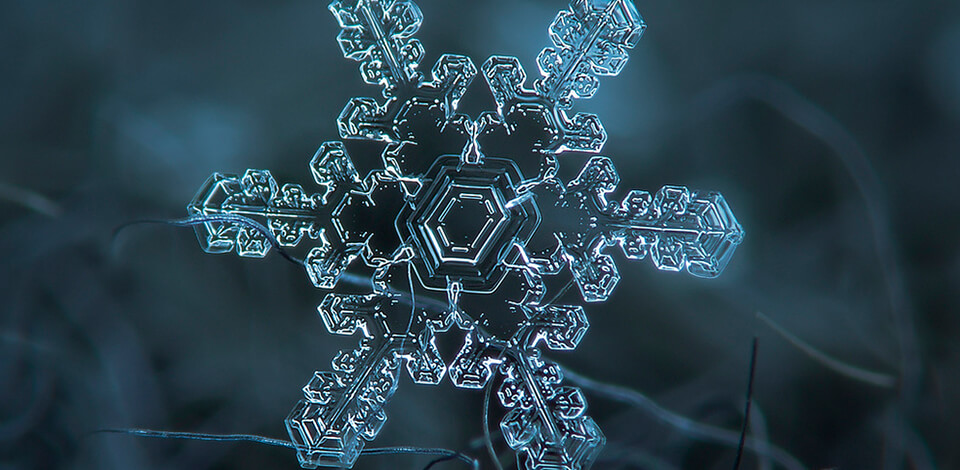
Snowflake photography is a complex process, which requires a lot of experience from a photographer. Therefore, if you are a beginner in this area, we recommend you to repeat these snowflake photography ideas to grasp the peculiarities of this genre and get some inspiration.
Snowflake photography belongs to the genre of macro photography. Photographers need to notice and capture the moment to take a really beautiful shot. They also should be able to see unusual in the most standard things.
The photo post-processing stage is no less important, as you have to correct colors manually or address professional color correction services. If you are looking for inspiration and want to take the most impressive snowflakes photographs, have a look at the list of the best snowflake photography ideas.

The first snow is a long-awaited moment for many people, so photographers can’t miss a chance to snap it. A photo of a snowflake just fallen on the autumn grass, which is still green or already yellow, is sure to cause admiration because of the vivid contrast.
However, taking such a photo is quite a complicated process, as a photographer has less than a second before a snowflake melts.
So, the question is how to capture snowflakes on camera? The main task is to choose the right time for shooting. The air temperature should be -15℃ as a minimum. We recommend using manual focusing. It is better to remove fragments of ice, other snowflakes, or water.

Capturing a snowflake on a black background is one of the best and the most popular macro photography ideas. Such snowflake photos allow viewers to inspect every detail of the snowflake and highlight its uniqueness thanks to a dark background.

To take such a photo, a photographer has to catch snowflakes directly onto the black background, for instance on a sheet of black cardboard, paper, or fabric. Also, you can shoot snowflakes in the natural environment. Then you will have to add a necessary background during photo editing.
To make a snowflake look absolutely compelling, we recommend you take advantage of a macro filter. You only need to attach this filter to the lens you are using.
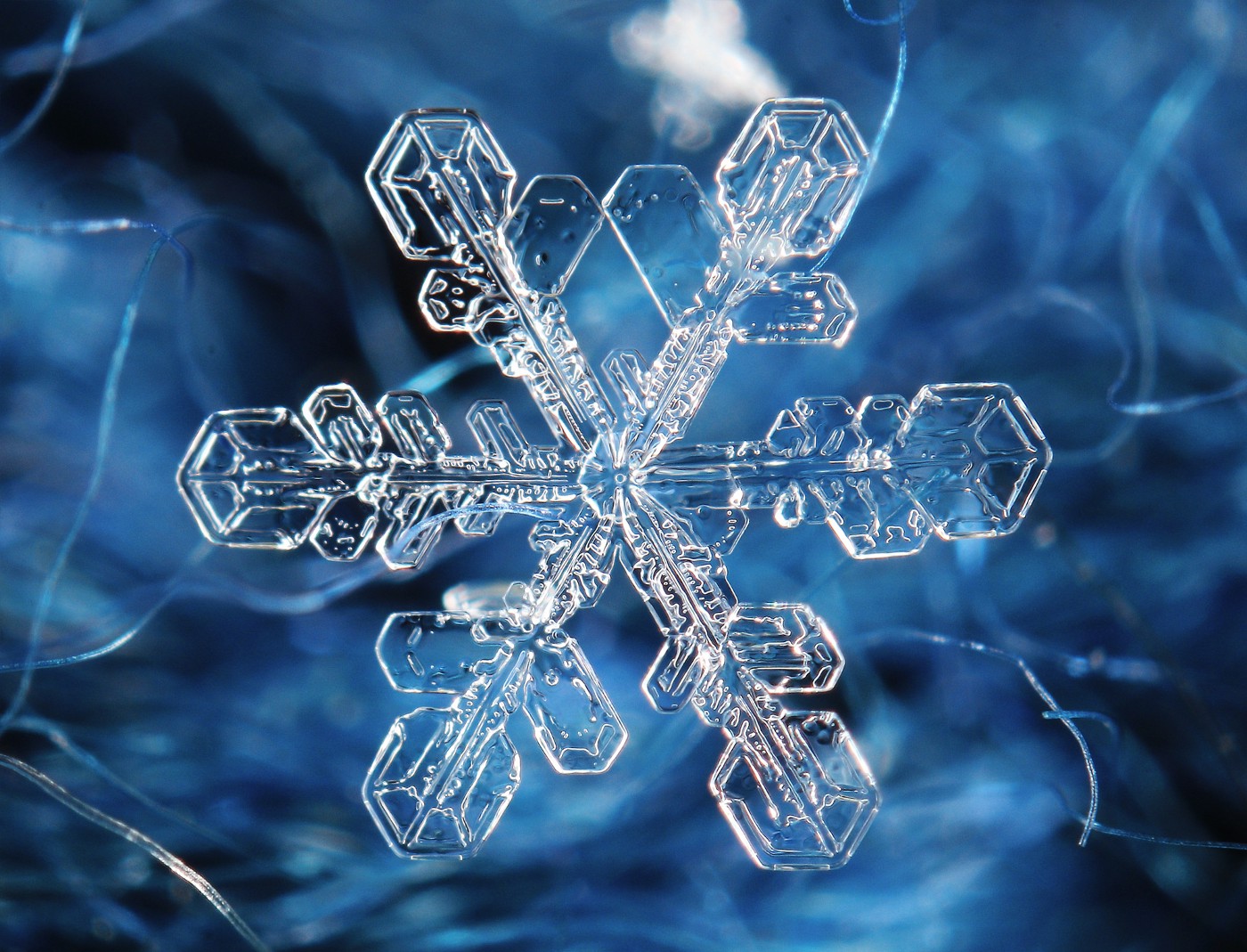
Another good approach to photographing snowflakes is shooting on a bright background. The semi-transparent nature of a snowflake is best emphasized by blue, light blue, orange, and yellow, as these colors create the most vivid contrast. Using fabric as a bright background can be a good way out.
One of the most important moments to consider when you want to capture a snowflake on a certain fabric is its temperature. It has to be low enough not to melt the snowflake as soon as it touches the background. If the temperature outdoors is low enough, you may just put the fabric on the windowsill, or take it outside for a few minutes. In case this is not an option, just put the background fabric into a freezer.

Shooting a snowstorm is definitely one of the most amazing winter photoshoot ideas. This concept will perfectly suit photographers, who have no previous experience in snowflake photography, as taking pictures of them altogether during a snowstorm is much easier than trying to catch an individual snowflake.
To shoot a bunch of snowflakes, use a short shutter speed, especially for falling snow. If you really want to get pictures showing big and fluffy snowflakes, they have to be “frozen” with the help of a short shutter speed. About 1/250 second is a good starting point. If the shutter speed appears too long, the images of snowflakes will be blurred.

It is rather easy to catch a falling snowflake on your garment: a cap, a scarf, a glove, or a coat. Therefore, if you have a camera during a walk, taking a creative and exceptional shot won’t be a problem at all.
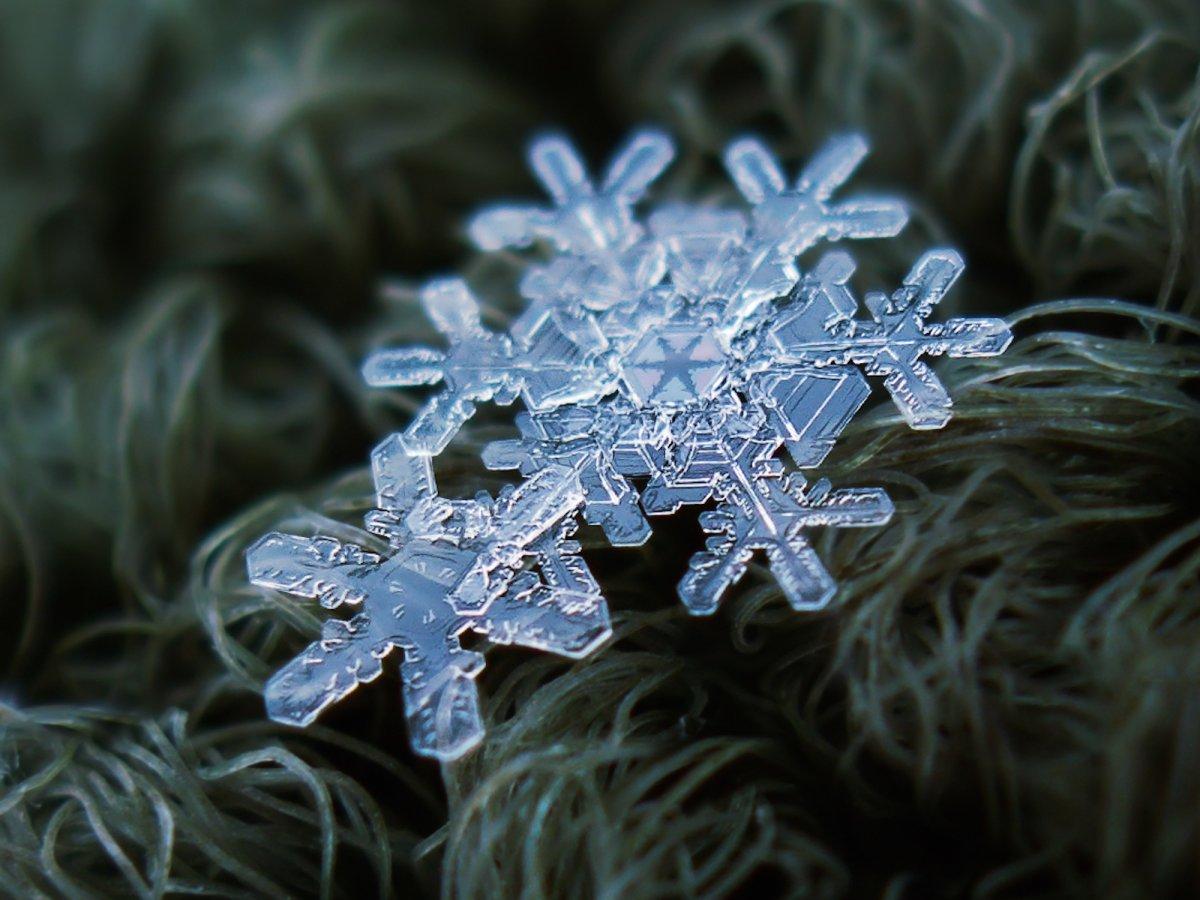
Photographing snowflakes, you should consider that an average size of a snowflake is about 1-2mm. So, to take a good shot with a snowflake in the center, you can use intermediate rings. They will increase the image size and minimize the focusing distance of the lens, which is a minimal distance between a snowflake and the camera, making the object appear bigger.
Don’t forget to check whether the intermediate rings fit your camera for macro photography. The perfect option is to use intermediate rings with a macro lens.

As you can see, snowflake photography is not only about placing a snowflake on a certain background and shooting it. Walking your pet during snowy weather, you can take beautiful and conceptual photographs. It is also interesting to shoot wild animals and birds being excited about the first snow. Such photos easily gain popularity thanks to their uniqueness.

A winter photoshoot like this is one of the best pet photography ideas. A photographer needs to take as many shots as he/she can because it is essential to catch the right moment both for the pet and the snowflake.
Try to shoot without a flash, as it can frighten a pet. For the most comfortable shooting and to be able to sharpen a pet while keeping the background blurred, we recommend using medium telephoto lenses with a focal length of 50-135 mm.

A snowflake gallery or a collage of several snowflakes is actually a creative photo project, which requires the utmost attention and a keen eye for detail. The main task of such a collage is to show the uniqueness and exceptionality of every single snowflake and to demonstrate that it is impossible to find two identical snowflakes.

To focus on a snowflake, turn the lens of the camera to place it parallel to the snowflake. Begin working with a lower aperture, for instance, f/11, which is also great for focusing on the whole snowflake. Correct the exposure if necessary.
We recommend taking photographs in RAW to get more opportunities for image editing, for instance, remove unnecessary parts of snowflakes or correct the shapes.
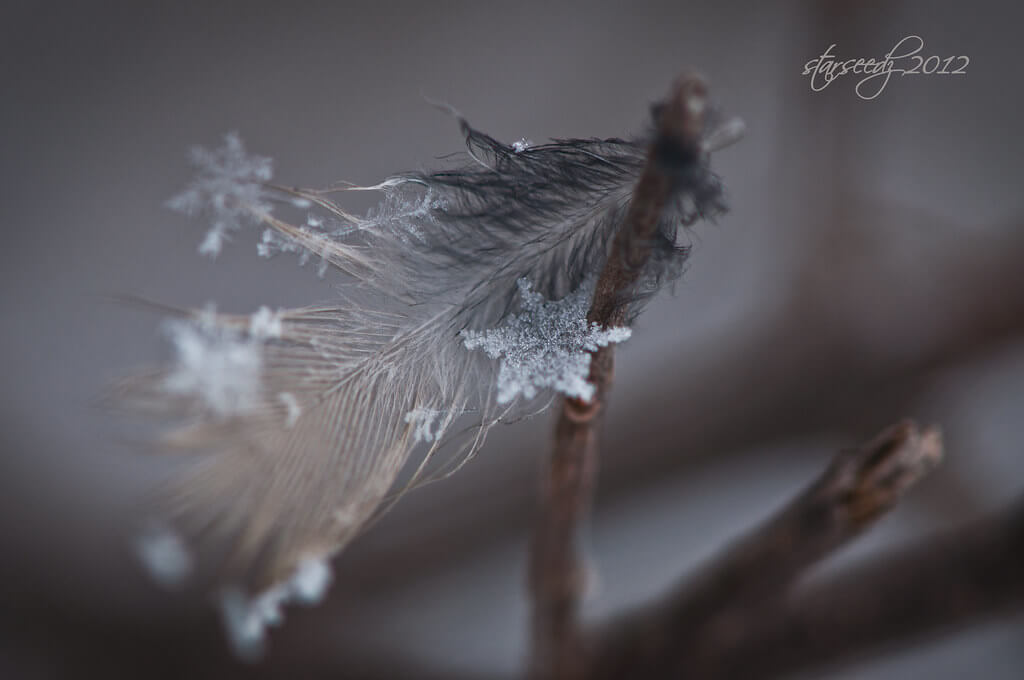
If you are wondering how to take photos of snowflakes to get really unusual pictures, you’ll like this idea. Try shooting a snowflake on an unusual background. To capture the atmosphere of light and air, use a bird’s feather as a background and catch several snowflakes on it.
For such an unusual photo, it is especially important to find proper photography lighting. We recommend using several flashlights with small softboxes. You may put them at any side. No matter where exactly the light will be directed, it will highlight the features of the snowflake anyway. Note that you need small tripods to hold the flashlights.
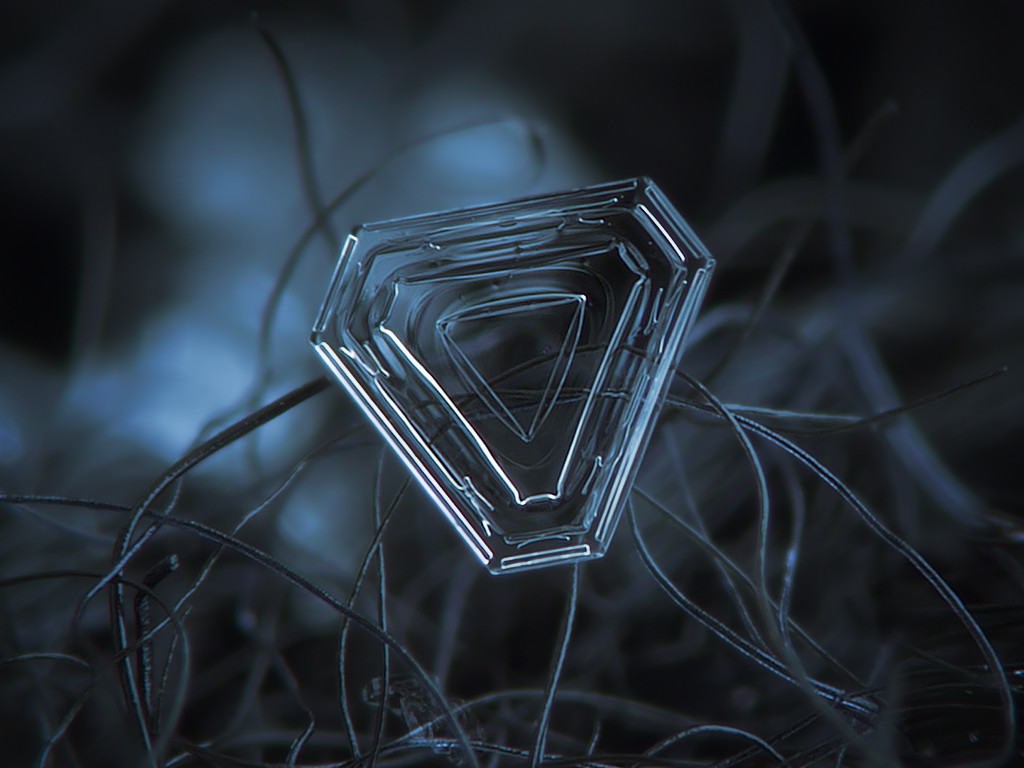
Getting deeper into the snowflake photography, you will notice that every snowflake is different and special. Although sometimes you will see really exceptional ones, because of their unusual shape.
If you are lucky to find one of these snowflakes, you will be able to take an outstanding shot even without a professional camera, using your smartphone only. For such an occasion, purchase a mobile macro lens. These small and lightweight lenses are mounted directly on your smartphone, significantly improving its macro shooting capabilities.
Besides, some latest models of smartphones can often successfully cope with snowflake macro photography tasks without additional help.

Another idea to show the art of the snowflake is to shoot a falling snowflake. Capturing the moment when it touches the ground and is almost lost among other snowflakes you will get a deep and unusual photograph.
To avoid random reflections of the snowflakes, we recommend shooting without a flash. The exposure time of 1/500 to 1/800 is perfect to freeze snowflakes in the frame, although you have to raise ISO to 640 not to make the shot too dark.
It is also highly recommended to work in a manual mode to get full control over your exposure. Besides, a photographer should consider that the battery discharges quickly in low-temperature conditions, so it is better to have spare batteries.
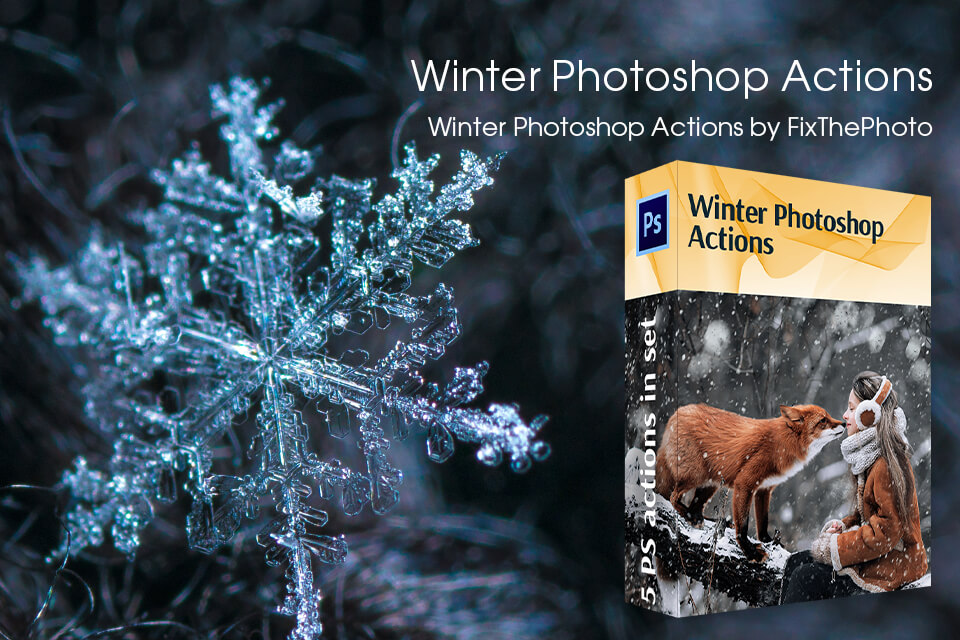
In case you want to edit your winter photographs, don’t hesitate to take To make a snowflake look absoluadvantage of Winter Photoshop Actions, which can make the snow extremely shiny and attractive.